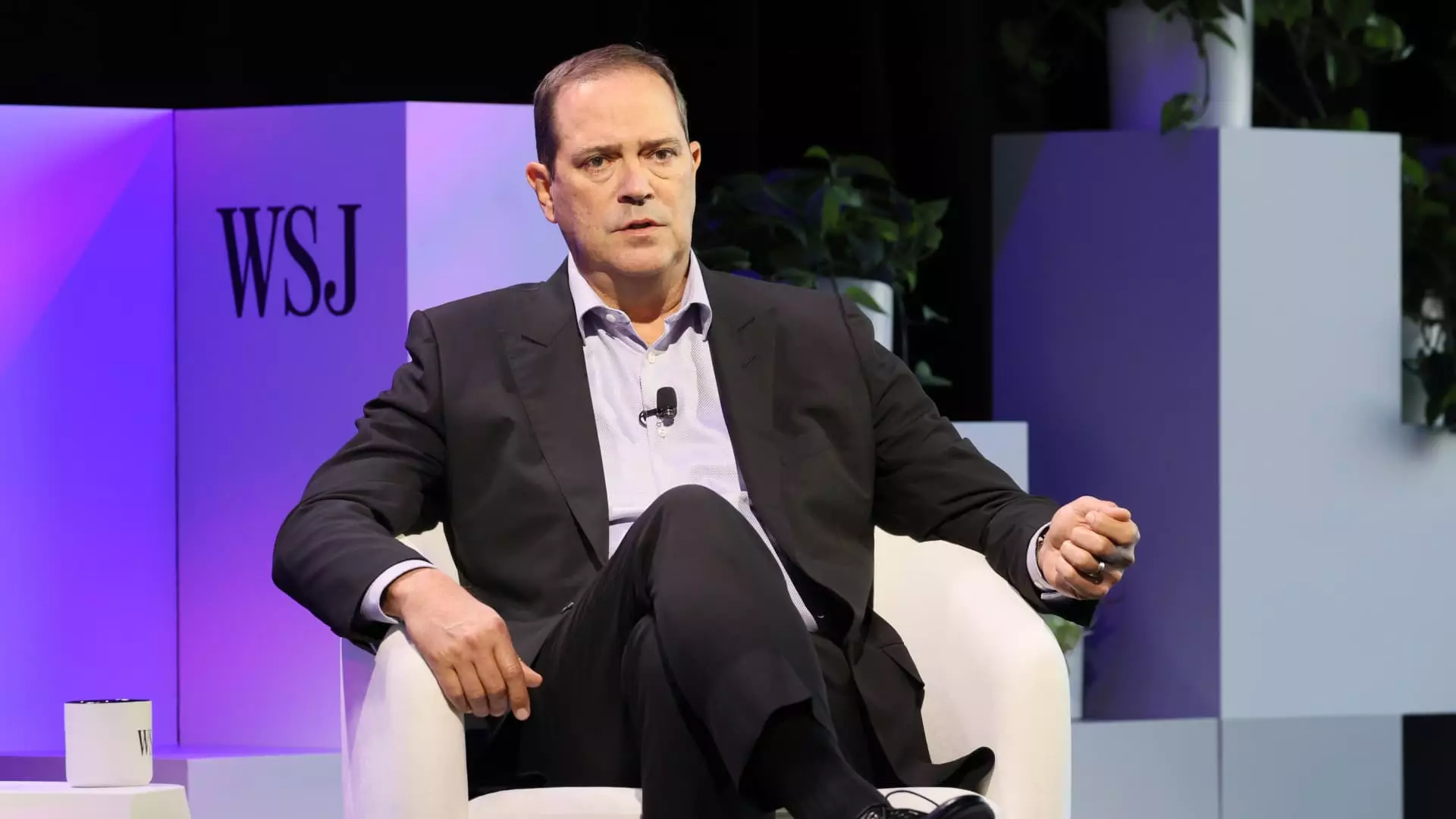Cisco Systems, a prominent player in the technology sector, has reported a concerning trend of declining revenue for four consecutive quarters, a development that raises eyebrows among investors and analysts alike. Despite this decline, the company’s recent earnings results managed to exceed the expectations of many analysts, which is an interesting juxtaposition. In after-hours trading, however, the stock price experienced a 2.5% drop, reflecting a level of skepticism in the market regarding the sustainability of Cisco’s performance.
In the latest results for the quarter ending October 26, Cisco reported a revenue of $13.84 billion, slightly surpassing analyst expectations of $13.77 billion. On the surface, these numbers appear robust, yet they indicate a significant decrease of 6% compared to the $14.7 billion recorded in the same quarter the previous year. A declining revenue trend over several quarters has set off alarm bells for those tracking the company’s performance.
The net income for Cisco also faced a downward trajectory, falling to $2.71 billion, with earnings per share (EPS) decreasing from 89 cents a year prior to just 68 cents this quarter. Such a dip in profitability underscores the challenges the company currently faces in maintaining a strong bottom line amid shifting market dynamics.
A closer look at Cisco’s revenue streams reveals that its networking segment suffered the most significant blow, with a staggering 23% decline to $6.75 billion, falling short of the $6.8 billion consensus expected by analysts. In contrast, Cisco’s security revenue exhibited a commendable rise, doubling to $2.02 billion and exceeding forecasts. This disparity in performance is telling; while traditional networking services falter, there is an evident shift towards security solutions, which could signal a strategic pivot for the firm in the future.
During the earnings call, Cisco’s CEO Chuck Robbins shed light on a burgeoning area of interest for the company: artificial intelligence (AI). Notably, orders from major clients for AI infrastructure reportedly topped $300 million in the quarter, suggesting a growing appetite for AI-related technology. This focus on AI aligns Cisco with market trends, as hardware sales tailored for generative AI applications are becoming increasingly pivotal in the tech landscape.
Robbins expressed confidence in surpassing $1 billion in AI orders for the fiscal year, buoyed by Cisco’s partnerships with hardware manufacturers specializing in AI-compatible technologies, particularly emphasizing collaborations with Nvidia for graphics processing units. The CEO hinted at an evolving strategy that could include support for additional GPU technologies as market demands shift. However, he acknowledged that widespread enterprise adoption of these technologies is still a few years off, aiming for significant deployment around 2025.
Amid these possibilities for growth, Cisco is also navigating external challenges. Recent legislation, particularly the Fiscal Responsibility Act of 2023, has imposed limits on U.S. government spending, resulting in delayed deals rather than outright cancellations. This situation presents a mixed bag for Cisco, as it indicates potential future opportunities once budgets stabilize but reveals the current pressure from governmental fiscal constraints.
Financial Chief Scott Herren provided insights into these challenges, emphasizing the importance of an upcoming budget agreement, especially with Republicans poised to take control of the White House and both houses of Congress. The hope for a resolution could pave the way for renewed spending in technology sectors, which would be beneficial for firms like Cisco that rely heavily on government contracts.
Looking ahead, Cisco has adjusted its full-year guidance, projecting adjusted earnings per share to fall between $3.60 and $3.66, with revenue expected between $55.3 billion and $56.3 billion. This revision is promising but reflects a cautious optimism. Analyst expectations hovered around $3.58 per share and roughly $55.89 billion in revenue, indicating that while Cisco is positively adjusting, there are still challenges to meet market predictions.
Despite these hurdles, Cisco’s stock had shown resilience earlier in the year, up 17% as of the latest trading session, contrasting starkly with the overall performance of the S&P 500. Whether this performance can be sustained amid ongoing challenges and a shifting market will depend significantly on how effectively Cisco manages its transitions, especially regarding AI infrastructure and adapting to market demands. The company stands at a crossroads, and its next steps will be critical in determining its future trajectory in the competitive tech landscape.

Leave a Reply